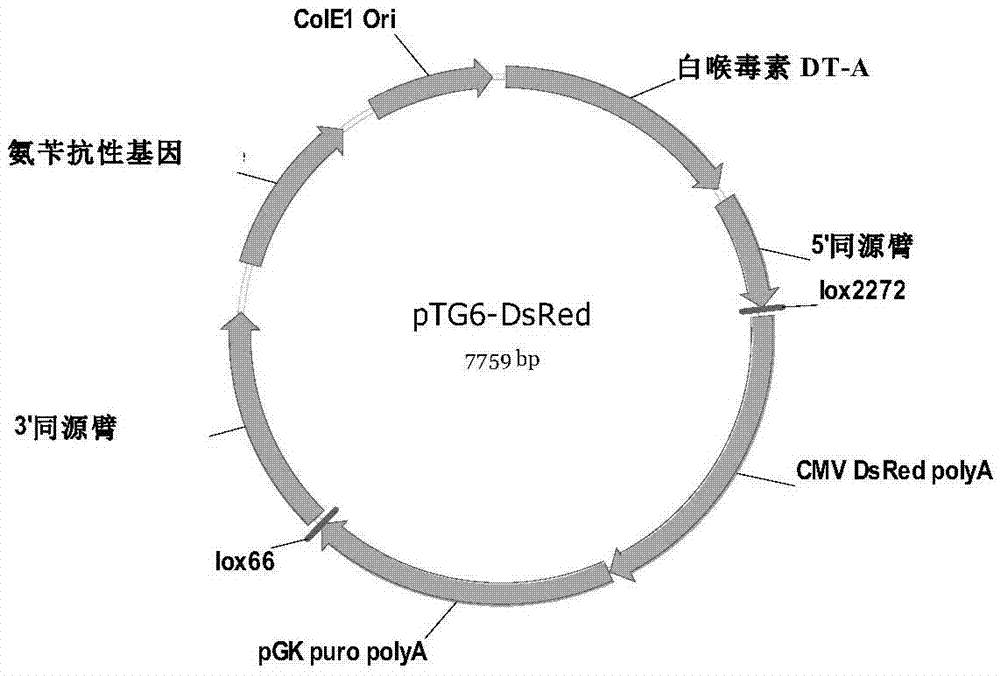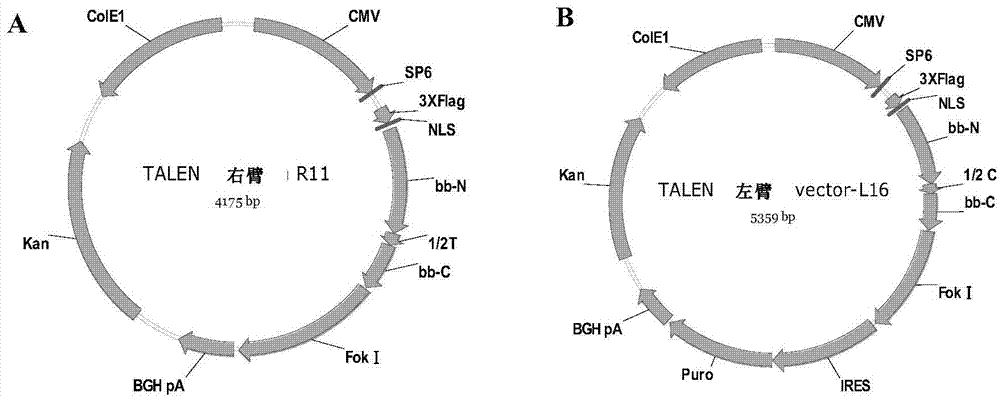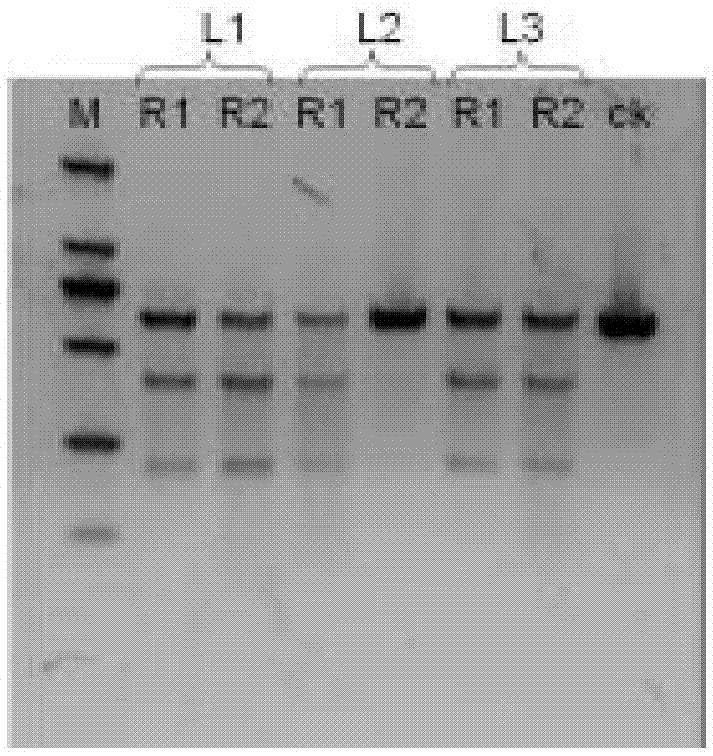Gene mapping integration and expression system and application thereof
A technique of expressing cassettes and transgenic cells, applied in genetic engineering, using microcapsules, using microinjection, etc., can solve problems such as uncertain expression of exogenous genes
- Summary
- Abstract
- Description
- Claims
- Application Information
AI Technical Summary
Problems solved by technology
Method used
Image
Examples
Embodiment 1
[0128] Construction of Homologous Recombination Expression Vector pTG6-DsRed Containing Loxp Sequence
[0129] Design the G6 site gene targeting vector, use the red fluorescent protein DsRed as the target gene, puromycin as the positive selection gene, and diphtheria toxin as the negative selection gene to construct a plasmid, and connect two Loxp sites containing different core sequences on both sides of the target gene Point (Lox2272, Lox66), using homologous recombination to realize the anchoring of the Loxp sequence at the G6 site.
[0130] Specifically, pKO-V913 was used as the backbone vector, and the negative selection gene diphtheria toxin (Diphtheria Toxin A, DT) was inserted into the multiple cloning site by RsrII single enzyme digestion to obtain pKO V913-DT.
[0131] Using the plasmid pDsRed-N1 as a template, use Lox2272-containing primer F1: CCGCTCGAGATAACTTCGTATAGGATACTTTATACGAAGTTATTAGTTATTAATAGTAATCAAT (SEQ ID NO.:5), and primer R1: GAATGATATCGATCTGACGGTTCACTAA...
Embodiment 2
[0137] Construction and activity verification of Talen left and right arm expression vectors
[0138] A complete TALEN sequence includes a binding region on the left, a cleavage region, and a binding region on the right. Referring to the gene sequence of the G6 site, according to the principle of TALEN target site design, select two 14-19bp sequences separated by 17-18bp as the target site, and design three left arms and two right arms respectively. The specific sequences are as shown in the figure below Show:
[0139]L1: GCTCCTGATAAATTAGTTC (SEQ ID NO.: 15);
[0140] L2: GCTCCTGATAAATTAGTT (SEQ ID NO.: 16);
[0141] L3: GCTCCTGATAAATTAGT (SEQ ID NO.: 17);
[0142] R1: TGCTTGCGTTGAGGTAT (SEQ ID NO.: 18);
[0143] R2: GCTTGCGTTGAGGTATT (SEQ ID NO.: 19).
[0144] Corresponding to the above-mentioned target recognition domains respectively, the Talen backbone vector ( figure 2 ) and a gene cloning kit for gene cloning, and constructed five Talen eukaryotic expression vecto...
Embodiment 3
[0148] Preparation of cell lines expressing red fluorescent protein anchored by Loxp
[0149] Isolate goat fetal fibroblast cell line by tissue block method, culture it in a medium containing 2mM glutamine, 1mM sodium pyruvate, 1× non-essential amino acid, 2ng / mL basic fibroblast growth factor, 1000units / mL Mouse leukemia inhibitory factor, 10% fetal bovine serum (GIBCO), 100units / mL of penicillin and streptomycin in Glasgow essential medium (GMEM, GIBCO), the cells were stored at 37 ° C, 5% CO 2 Cultured in an incubator, after the second passage, the cells in the logarithmic growth phase were taken to prepare for gene transfection.
[0150] Figure 5 A schematic diagram of homologous recombination at the G6 site of the homologous recombination vector pTG6-DsRed is shown. The constructed targeting vector pTG6-DsRed was linearized by SalI, and 15 μg of the linearized vector DNA fragment was recovered, mixed with 7 μg of TALEN left and right arm plasmids (pTL1, pTR2) and co-tr...
PUM
 Login to View More
Login to View More Abstract
Description
Claims
Application Information
 Login to View More
Login to View More - R&D
- Intellectual Property
- Life Sciences
- Materials
- Tech Scout
- Unparalleled Data Quality
- Higher Quality Content
- 60% Fewer Hallucinations
Browse by: Latest US Patents, China's latest patents, Technical Efficacy Thesaurus, Application Domain, Technology Topic, Popular Technical Reports.
© 2025 PatSnap. All rights reserved.Legal|Privacy policy|Modern Slavery Act Transparency Statement|Sitemap|About US| Contact US: help@patsnap.com



